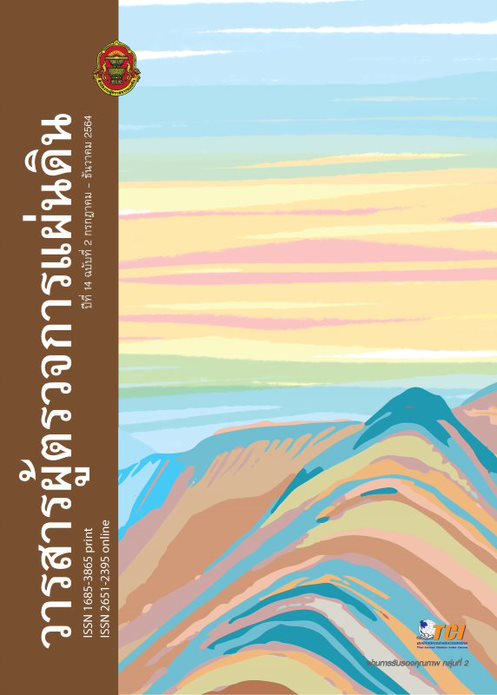Identification of Unidentified Migrant Workers Dead in Thailand
Keywords:
Migrant Workers, Missing Persons, Unidentified Bodies, IdentificationAbstract
Migrant workers play an important role in driving the economy of the destination country. Thailand is one of the ASEAN countries that is considered as a destination for migrant workers, both skilled and unskilled labors. Mostly, these unskilled labors enter Thailand by themselves or through illegal brokers and human trafficking. These illegal migrants cannot access the process of registration provided by the government which lead to the lack of the personal data recorded, no identification cards and no work permits. Therefore, when they died, they will become the missing persons of the families in the origin country and the unidentified bodies in Thailand which trends to increase every year. So the identification uses forensic processes e.g. genetic fingerprint dental, etc. Each method has limitation by many factors such as condition of the bodies data and implementation. Moreover, the most important are ante-mortem data and post-mortem data. The problem is the illegal migrant workers do not have the information to identities himself. When he died, and could not be identified thus becoming an unidentified Bodies.In addition, there is no data from family to compare between them. The problems above lead to a study identification of unidentified migrant workers dead in Thailand. In order to study problems and find the ways to prevent, solve missing persons and unidentified bodies in Thailand. Including recommendations for establishing standards collect data migrant workers dead in Thailand in order to relevant agencies to practice foe reduce the number of missing persons and unidentified bodies in the future.
References
Ali, Huma, Nancy Brown, Lydia Chiro, Emily Dillinger, Emily Droder, Julia Hanby, Neha
Mittal, George Nardi, Mikaela Rakos, Brice Relaford, Maggie Soderholm, Jennifer Tharp, and Jacob Yosafat. Recovery and Identification of the Missing After Disaster: Case Studies, Ethical Guidelines and Policy Recommendations. Last modified 2017. Retrieved from https://www.cmu.edu/dietrich/ehpp/documents/2011- Recovery-and-Identification-of-the-Missing-after-Disaster.pdf/
Anuchit Bunyarin & Jomdet Trimek. (2020). Myanmar Smugglers in Thailand after the
Opening of ASEAN Community (AC). Social Innovation Journal, 3(1),93-105 Retrieved from jsi.rsu.ac.th/Article/Article_บทความ%20คุณอนุชิต.pdf
Bernard, Vincent. (2017). The disappeared and their families: When suffering mixed with
hope, The International Review of the Red Cross, 99(2), 475-485.
Bongkochmas Ek-Iem. (2019). Migration: The Establishing and Maintaining of Social
Networks of Women Burmese Migrant Workers in Chiang Mai City. Mekong-Salween Civilization Studies Journal 10(1). Retrieved from http://www.147386-Article Text-535404-1-10-20190423 (2).pdf
Boss, Pauline. (2017). Families of the missing: Psychosocial effects and therapeutic
Approaches, The International Review of the Red Cross, 99(2), 519.
Brian, Tara, & Laczko, Frank. (2014). Counting migrant deaths: an international overview.
In T. Brian, & F. Laczko (Eds.), Fatal journeys ting lives lost during migration (pp.15e44). Geneva: International Organization for Migration (IOM). Retrieved from http://publications.iom.int/bookstore/free/FatalJourneys CountingtheUncounted.pdf.
Carter, D. O. & Tibbett, M. (2002). Forensic taphonomy: The adaptation of the soil
microbial decomposer community to soft tissue burial, in Proceedings of the 33rd International Symposium on Archaeometry, 22–26 April 2002, Amsterdam, The Netherlands (H. Kars and E. Burke, Eds.). Ámsterdam: Institute for Geo- and Bioarchaeology, Vrije Universiteit, 453–456.
Grant, Stefanie. (2016). Identification and tracking. In Tara, Brian and Frank, Laczko (Eds.),
Identification and tracking of Dead and Missing Migrants (pp. 31-64).
Switzerland: International Organization for Migration.
Harkins, Benjamin. (2019). Thailand: United Nations Thematic Working Group on Migration
in Thailand. Thailand Report 2019. Retrieved from https://reliefweb.int/
sites/reliefweb.int/files/resources/Thailand%20Report%202019_22012019_LowRes.pdf
ICRC. (2017). Missing Migrants and Their Families: The ICRC’s Recommendations to
Policy- Makers. (pp.5-25). Switzerland: ICRC.
Kovras, Iosif & Robins, Simon. (2016). Death as the border: Managing missing migrants and
Unidentified bodies at the EU's Mediterranean frontier, Political Geography, 55,40-49.
Last, T., & Spijkerboer, T. (2014). Tracking deaths in the Mediterranean. In T. Brian, &
F. Laczko (Eds.), Fatal journeys tracking lives lost during migration (pp. 85e108).
Geneva: International Organization for Migration (IOM). Retrieved from http://publications.iom.int/bookstore/free/FatalJourneys_
CountingtheUncounted.pdf.
Ministry of Labour. (2021). Thai Labour Market and the Dependence on Foreign Labour
from Neighbouring Countries. In Report of economic situation international labor and international labor movement quarter 1/2564 (p.18). Bangkok: Ministry of Labour
Nattawut Rodchom. (2010). Forensic Identification of Orthodontic Subject by Using
Dental Radiographs. Master of Science Program of Forensic Science
Graduate School Silpakorn University.
Oxenham, Marc & Hayman, Jarvis. (2016). Estimation of the time since death in
decomposed bodies found in Australian conditions. Australian Journal of
Forensic Sciences, 49(1), 1-14.
Pimonpan Isarabhakdi. (2004). Meeting at the Crossroads: Myanmar Migrants and Their Use
of Thai Health Care Services, Asian and Pacific Migration Journal, 13(1), 107-126.
Rachadaporn Mornmoung. (2020). A Model of Databases Missing Persons and
Unidentified Bodies in Thailand. Doctor of Philosophy in Criminology and Justice Administration. Faculty of Criminology and Justice Administration. Rangsit University.
Rachadaporn Mornmoung & Paweena Puangsri. (2018). Identification of Disappearing
Persons from DNA Test Together with Family Tree Analysis Implication for Justice System. Ubon Ratchathani Rajabhat Law Journal, 6(1), 20.
Saovanee Chantapong, Prangprao Singhapong, & Kanchanit Lertpienthum. (2018).
Migrant labor flows: understanding, accessible and fair. MPG Economic Review, 2.
Retrieved from https://www.bot.or.th/Thai/ResearchAndPublications/
DocLib_/Article_7Aug2018.pdf
Siripong Ladavalya Na Ayuthya. (2016). Thailand’s Management of Three Nationalities
Illegal Entry Transnational Migrant Workers : Survey in Law, Policy and Alternative. political science and public administration journal,7(1), 49-74.
Wannapa Leerasiri. (2020). Tendency for Return Migration of Migrant Workers after
Myanmar Reform. Political Science and Public Administration Journal, 11(1), 1-34.
Downloads
Published
How to Cite
Issue
Section
License
- Content published in the journal is personal opinions of authors which the office of Ombudsman and the editorial team are not bound to be accordance with.
- Articles, content, images, etc. published in the Journal of Ombudsman are copyright of the Journal. If any person or entity wants to bring all or part of it to publish or to do any action. Must obtain written permission from the journal's first.



